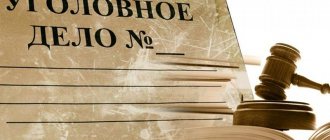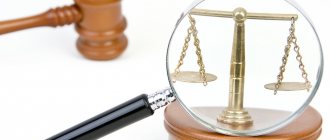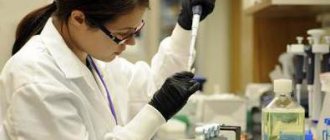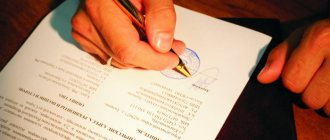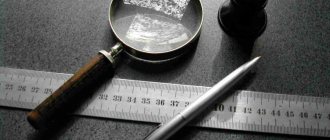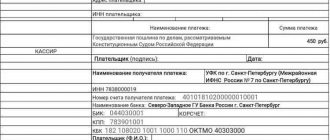Many people do not know what types of forensic examinations exist. Also, what is the procedure for carrying out an emergency inspection and within what time period it should be carried out.
A forensic medical examination is carried out after the investigative authorities have initiated criminal proceedings or a court hearing has been held. The expert’s actions consist of providing answers to the questions posed in the resolution on the appointment of an expert expert. The legislation of Russia provides for the time frame for conducting a forensic medical examination (how much time should pass from the beginning of the study). Prices from private expert organizations may vary.
Classification
There are the following types of forensic examinations:
- Primary and additional. Primary examination is carried out when the object of research is studied for the first time. It is often prescribed if special knowledge is required in a certain area of life. To order this type of examination, evidence may be required, which is contained in the case materials. After inspecting the object, a conclusion is made. In those situations in which the study did not provide accuracy, clarity and completeness of answers about the object under study, an additional examination is prescribed. The implementation of the SME can be entrusted to the specialist who conducted the primary research, as well as to another expert.
- Repeated. It is appointed when all the necessary information has not been received. Such research is always carried out by another expert.
- Commission. In certain cases, the FE may be carried out by a commission group.
- Complex. Such an examination is prescribed when the results of previous studies contradict each other. In this case, specialists need to familiarize themselves with the information specified in previous reports.
The examination is carried out by one expert in such cases as determining the inviolability of sexual freedom, the degree of injuries received on the body.
The composition of a single examination includes:
- full inspection and examination of the object;
- rendering a conclusion.
If the situation requires knowledge in different areas, then the court, by issuing a ruling, orders a comprehensive examination. The commission of specialists must give true answers to the questions posed in the court document. With such an examination, various possible research methods can be used.
What is the criterion for evaluating the work of forensic experts?
One of the indicators of expert work is the number of repeated examinations, which is used as a criterion for assessing the quality of work of state forensic institutions.
According to the law, a commission examination is mainly appointed if the results of a previous study are in doubt (according to Part 2 of Article 207).
“In cases where doubts arise about the validity of an expert’s conclusion or if there are contradictions in the conclusions of an expert or experts on the same issues, a re-examination may be ordered, the production of which is entrusted to another expert.”
In recent years, there has been a continuing trend towards an increase in both appointments and the production of various forensic examinations and expert studies. At the same time, the number of complex, multi-object, complex forensic examinations being carried out is increasing.
Conditions for carrying out the SME
Rules for conducting a forensic medical examination:
- Specially equipped premises (medical institutions, courts, Ministry of Internal Affairs).
- Relevant education of the expert.
It does not matter where the specialist holds his position, in government agencies or in a private structure. For failure to fulfill professional duties or conclusions drawn up in an improper manner, a specialist can be held accountable under an article of the Criminal Code of the Russian Federation and a clause of the regulations.
What is a forensic examination after a beating?
In cases of fights, domestic conflicts and other violent acts, conducting an investigation is necessary to establish the fact of damage, record the consequences, and also to classify the crime. Beating, depending on the type of injury, is classified as:
- Mild - a short-term health disorder, resulting in temporary loss of ability to work (up to 21 days). This includes wounds with stitches, fractures of the ribs, nose, and mild concussion.
- Average - loss of ability to work for a period of more than three weeks. However, the consequences of the beating did not pose a danger to human life - broken bones, bruises of internal organs, severe concussion.
- Severe - consequences dangerous to human life, or resulting in loss of hearing, vision, or organ - injury to the skull, spine, penetrating wounds of the body that caused blood loss, shock, coma and other consequences. Serious consequences include those that cause facial disfigurement (serious scars) and pregnancy loss.
For beating that caused injuries of varying severity, the perpetrator may be punished:
- for beatings - punishment in the form of compulsory labor for up to 360 hours, up to a term of two years;
- for minor injuries - from a fine of up to 40 thousand rubles to imprisonment for a term of two years (depending on aggravating circumstances, the main ones being the use of weapons and action by a group of persons);
- for injuries of moderate severity - a sentence of up to five years;
- for severe injuries - imprisonment for up to 15 years.
The procedure for passing a forensic medical examination
If, after a beating, a person goes to the hospital earlier than to law enforcement officers, it is important that all studies are documented, if necessary, X-rays, ultrasound or other examinations are performed, and all injuries are recorded and described in detail. It should be borne in mind that a sick leave certificate issued at a medical institution with the specified diagnosis is not an analogue of the medical examination and is not a reason for initiating a criminal case.
In order for the perpetrators to be punished, it is necessary to file a statement with the police. The examination can be completed following a referral issued by the investigator, or by personally contacting the experts.
The SME takes place in several stages:
- Study of all documents in the case (the expert may request materials from the crime scene, testimony, and investigator’s conclusions).
- Questioning the victim (it is important to indicate all the places where the blows were struck, the nuances of the beating, so that the expert does not miss subtle injuries).
- Examination of the victim (if a person comes to an expert after hospital treatment and assistance, then a direct examination can be replaced by studying medical documents and conclusions).
- Drawing up a conclusion.
The investigator attaches to the referral questions that the expert must answer in the conclusion: where the injuries are located (localization), their severity, how the blows were inflicted, how long ago the blows were inflicted, how long the ability to work was lost, the possible consequences of the beating and whether there was a threat to life and, most importantly, the degree gravity. The conclusion is transferred to law enforcement officers. The document is not issued to the victim.
The procedure for carrying out an independent inspection
The basis for conducting a forensic medical examination is a resolution or other decision of a judicial authority, as well as the prosecutor's office.
Before starting a forensic medical examination, the head of the state body carries out the following actions:
- studying the resolution or other document on the purpose of the study;
- establishing the type, scope and nature of future research.
Based on the actions taken, the head of the GSEU determines and selects:
- The specialist who will conduct the research.
- The length of time within which expert actions must be carried out.
- The procedure for involving other specialists in various spheres of life (for example, a doctor) in the examination.
- The procedure for contacting the government agency that appointed the examination.
Material, documents, objects that need to be examined are transferred to the expert during the working day from the moment he is appointed as the person responsible for the progress of the study.
The work performed by the expert is monitored by the supervisor. If there are reasons due to which it is impossible to conduct an examination and provide answers to the questions posed, the head of the SSEU can return all provided materials to the government agency. In this case, you must provide a letter and indicate in it the reasons for the impossibility of the examination. The procedure for conducting a forensic medical examination.
After receiving materials for research, the specialist needs:
- Familiarize yourself with the information specified in the decision to appoint an examination.
- Make sure that all materials specified in the documents are available.
- Assess the sufficiency of the material evidence provided to answer the questions asked.
- Ensure storage of transferred items.
If the expert cannot complete all of his actions within the established period by a resolution of the state body, this must be reported no later than 3 days before the end of the period.
When, during familiarization with the list of materials and its availability, a discrepancy is discovered, a report should be drawn up. This document will be the basis for suspending the expert proceedings. The duration of time allocated for the examination is extended by the period during which the inconsistencies were eliminated. If government agencies have not responded within 30 days from the date of receipt of the request, the expert may return the research objects. In this case, you do not need to attach a letter describing the reasons. When, during the course of the study, a specialist realizes that the materials are unsuitable or that they are insufficient, he needs to inform the person or body that appointed the examination. In such cases, proceedings may be suspended. If an expert is unable to complete research due to personal absence, his responsibilities may be transferred to another specialist or the deadline for completion may be extended.
The appointed expert must be guided in his actions by the legislative norms of the country, as well as methods. First of all, it is necessary to use methods that are not capable of changing the appearance, composition, or structure of the object under study. After examining the object, the expert prepares a conclusion. It must be compiled in two versions. One of the copies is sent to the body that requested the examination, the second is stored in the archives department of the SSEU. The conclusion must contain the signatures of all participants in the examination, which are certified by the seal of the organization.
The expert opinion must contain the following information:
- results of expert actions carried out;
- applied methods;
- a list of objects that are transferred to government agencies;
- characteristics of the devices used during the study;
- conclusions.
If the expert did not give answers to all the questions posed, in conclusion, you need to indicate why he could not do this.
Forensic examination, timing after beatings
To record beatings, a forensic medical examination is required. There is no exact time frame within which victims must undergo a medical examination. However, time affects the quality of the emergency medical examination, since the marks of the beating may heal. Experts advise contacting experts in the first two days. If the victim delays with the ITU, according to the law, this is not a reason to return the statement to the police.
In such a situation, to achieve a result, it is necessary to prepare other evidence - witnesses, recording of the commission of a crime, documents on the provision of medical care. At the same time, a case of beating without an ITU conclusion may cause distrust in court.
The procedure for receiving and registering examination materials
The head of the GSEU or a specialist who exercises these powers accepts and registers research materials. Information about materials that have been received must be recorded in the incoming correspondence journal.
Russian legislation in the field of healthcare defines the following general list of objects of examination:
- People;
- case materials (arbitration, civil, criminal);
- corpses;
- medical documents;
- samples for comparative study;
- documents on violations of administrative legislation;
- evidence.
All materials and objects must contain information necessary during the investigation.
Transferred items, documents, materials must be packaged and sealed. Explanatory inscriptions are indicated on them. Only an expert specialist appointed by the head of the GSEU is authorized to open the packaging upon order. The manager can accept and unpack if the order for the study was also packed there. In addition to the research materials, similar samples for comparison may be attached. This may be the responsibility of the expert. If the expert provides the examination with comparative samples, then he needs to indicate this in the conclusion.
Features of the procedure for organizing and conducting examination of a corpse
The legislation defines the following rules for the forensic medical examination of a corpse, and what needs to be noted by the expert depending on the origin of the injuries:
- condition of clothing;
- damage to shoes;
- injuries;
- traces (for example, blood);
- the location of the body in relation to objects in the environment;
- changes in some parts of the body;
- the presence of traces on an object that is related to the death (for example, a vehicle);
- traces left from dragging on the body of the deceased and the scene of the incident;
- the ratio of damage to the body and things;
- amount of blood lost;
- instrument of bodily harm;
- corpse pose;
- prints on a weapon or other involved object;
- description of the wound;
- traces of feces, urine;
- traces from a loop turn;
- number of furrows;
- if there is more than one furrow, you need to study the location in relation to each other;
- the distance from the body of the corpse to the place where the noose was secured;
- the depth at which the corpse was located after immersion;
- method of removing the body;
- corpse clothing for seasonal appropriateness;
- the period of time during which the body was in water;
- degree of burns;
- signs of being on fire before death;
- color of the skin;
- signs of frostbite;
- the presence of body parts on an object that causes death or is related to this event;
- medicines;
- instruments for illegal medical actions (for example, abortion);
- condition of the external organs of the reproductive system;
- distinctive features on the body of a corpse, signs (for example, a tattoo);
- location of individual parts of the body of the corpse;
- absence of any body parts;
- pupil diameter;
- diseases that a person suffered during his lifetime.
The examination of the corpse takes place in the relevant department of the State Medical University.
The expert must provide:
- dead body;
- report from the scene of the incident;
- resolution ordering an examination.
To prevent putrefactive processes from occurring at a rapid pace, the corpse is stored in refrigerator chambers.
The required temperature is +2 C. All accompanying items must be preserved (for example, clothing). If a specialist discovers during the study that a person had to die due to infection, poisons (toxicology) that are life-threatening, he must notify management. Often, examination of the corpse (surgery) begins when the corpse is cooled. When conducting research, the expert needs to perform the following actions:
- draw up an examination plan;
- fill out a death certificate (medical);
- send for the study of body parts and other objects to certain laboratories;
- attach the conclusions of laboratory tests to the conclusion.
Often, an expert needs to find out the circumstances and conditions in which a person died. If there is permission, the expert can ask relatives for information about the health status of the deceased and medical characteristics.
The external study is aimed at examining:
- clothes;
- items;
- shoes;
- cadaveric phenomena;
- discharge.
To establish the time when a person’s death occurred, laboratory and instrumental methods are used.
External body examination includes:
- skin examination;
- head examination;
- limb examination;
- examination of the genital organs;
- examination of the chest, back, abdomen;
- detection of skeletal bone deformities.
External damage is examined by simple inspection. If necessary, use magnifying devices. Each damage is described separately.
The description must include the following information:
- view;
- location;
- form;
- direction;
- channel;
- pollution;
- color;
- size;
- presence of inflammation;
- the condition of the tissues around the damage;
- healing of damage.
The shape of the damage is indicated as geometric shapes.
The size must be measured with a ruler. If the department has a technical device for performing radiography, then this procedure is performed before dissecting the soft tissues. This also applies to photographing damage and other items. For fractures, you must indicate the type of deformation that occurred. An internal examination of a deceased person involves an autopsy of the following parts of the body:
- cranial cavity;
- abdomen.
After this, the extracted organs are studied. All actions performed and damages that occurred during the investigation must be recorded in writing.
To remove organs, a specialist can proceed as follows:
- extract each organ separately;
- extract several organs in a complex manner;
- open directly into the body of a deceased person, and then remove it for careful measurement and inspection;
- extract everything together.
Just as with external examination, color, damage, structure, and smell are noted. All objects that can be used as material evidence must be taken and transferred to the government agency that ordered the study. For example, blood, hair, nail plates, skin. If there is permission from the person who ordered the examination, the fingers of the corpse may be transferred (for the fingerprinting procedure). After all expert actions have been carried out, the organs are placed in the body cavity and sutured. It is prohibited to place objects of foreign origin. It is allowed only after all actions have been completed to introduce substances that produce preservation into the body of the corpse. When the examination is completed, the specialist fills out a death certificate (medical) and signs it. The medical institution must ensure storage of the body, as well as all belongings. Institutions where research is carried out are required to be cleaned every day.
Where to undergo a forensic examination - review of the TOP-3 service companies
If you do not know how to undergo a forensic medical examination and where the expert bureau is located, I recommend you 3 well-known companies.
1) Regional medico-legal center
This company has a valid license to conduct expert activities. You can order a preliminary study of your existing documents directly on the company’s website. The company operates throughout Russia and is ready to send its representative to participate in a court hearing in any city.
The center's laboratories conduct not only forensic medical examinations, but also psychiatric, psychological, sexological and other types of forensic examinations. You can read about the meaning of this concept in one of our articles.
2) Center for Forensic Expert Assistance “Expertise”
The company provides services for all types of forensic examinations. It employs doctors with expert qualifications, as well as laboratory assistants and teachers from higher educational institutions. Therefore, the center’s activities are always based on current scientific developments. When conducting research, the latest methods and the most modern equipment are used.
Prices for services in the company start from 15 thousand rubles, and for such technological activities as polygraph examination, from 7 thousand rubles. Specialists even conduct a dental examination for 30 thousand rubles.
On the company’s website there are many interesting examples of research, including a new type of research, medical and social examination, about which we have a very interesting article in the journal.
3) Bureau of Forensic Medicine
If you do not trust private companies, you can conduct a forensic examination in this state regional budgetary institution. Here you can use the services free of charge within the framework of criminal and administrative processes in the direction of investigators and court decisions.
Types of forensic medical examinations carried out in the bureau:
| № | View | Description |
| 1 | Investigation and examination of the corpse | Determining the causes of death and how long ago it occurred |
| 2 | Survey | Removal of beatings, detection of alcohol and drugs in the blood |
| 3 | Examination of physical evidence | Examination of natural human secretions, hair, nails, skin residues |
| 4 | Direct participation in the inspection of the scene of the incident | Detection and recording of biological traces on the human body, on a corpse, as well as at the crime scene |
Conducting an examination of a living person: features, procedure
Before conducting an examination, the specialist needs to verify the identity of the person being examined. The examination is carried out through a medical examination. The first thing the expert does is question and listen to the confession. He finds out all the information about the situation that served as the basis for ordering an examination (health status). If it is not possible to examine a person, the necessary information is extracted from the case materials (medical documents). All documents are provided in their original form. Copies may be examined. At the same time, they must be certified.
Documents submitted to the expert for examination must contain:
- information about damage, beatings;
- extent of damage;
- the course of a painful deviation from the normal state of health;
- information that is important for the study (plastic measures to change the body).
If the examination of a person requires ability to work and knowledge in a certain area of life, other specialists may be involved in participation.
A medical specialist who has previously provided assistance to a person is not involved as an expert. An external examination of a woman is carried out in a specially equipped obstetrics and gynecology office. In a special unit, things and objects that were on the injured party and the suspect at the time of the incident are studied.
When the victim, after causing harm, applied to medical institutions, then it is necessary to request the provision of extracts and certificates.
After an external examination, as well as research in special laboratories, the documented result must contain the following information:
- list of documents from medical institutions;
- complaints;
- total number of pregnancies;
- number of births;
- health status;
- previous operations (for example, on vision);
- height, weight, body shape;
- developmental features;
- capacity;
- features of the external organs of the reproductive system;
- received bodily injuries;
Conclusions must be formulated based on the questions that were posed in the decision on the appointment of the examination.
The following materials may be attached to the written conclusion:
- photos;
- scheme.
If during the examination of the injured party an encroachment on sexual freedom is discovered, the expert notifies the investigative department that it is necessary to accompany the suspect for examination. It is recommended that an examination of a person who is suspected of committing a crime be carried out by an expert who conducts an examination of the victim.
Forensic medical examination establishes the following information about the suspect:
- physical development;
- information about the organs of the reproductive system;
- the condition of clothing and other items;
- damage to the body;
- marks on clothes, organs of various nature;
- suitability for sexual intercourse;
- health status.
The specialist learns information about the incident from the decision to appoint an examination. If the crime involves persons under the age of majority, all spoken words are written verbatim. This is necessary in order to objectively evaluate the remaining known information. When, during the examination, a specialist suspects that a person is mentally incompetent, he needs to report this to the government agencies that ordered the examination.
Before the examination, it is prohibited to clean or wash the clothes of the participants in the crime.
During the first interview, participants should be asked whether they currently have sexually transmitted diseases, as well as whether they have had such diseases in the past.
FAQ
Are there other possibilities for ordering forensic medical examinations in our country?
In accordance with Article 53 of the Fundamentals of the Legislation of the Russian Federation “On the Protection of the Health of Citizens”, at the request of citizens, taking into account their right to choose an expert institution and an expert, an independent medical examination can be carried out by experts who are not in official or other dependence on the state expert institution.
Who orders a forensic medical examination and in what order?
Like any examination, it is appointed by law enforcement agencies, that is, employees of the prosecutor's office, the Ministry of Internal Affairs, the FSB or the court, as well as an inquiry with a resolution or court ruling ordering the examination.
Are there specific deadlines for conducting a forensic medical examination?
It depends on the characteristics and complexity of the examination. In some cases, the examination of the corpse is carried out simultaneously and a conclusion can be drawn up on the same day. In others, after the research has been carried out, it becomes necessary to familiarize yourself with medical documents or case materials, which takes time. It is often necessary to use additional research methods. After an autopsy of the corpse - histological, medical and forensic, which sometimes requires a long time (from 2 to 4 weeks). However, after receiving all the necessary results, no more than 3 days are allotted for drawing up and formulating conclusions.
How are the results of a forensic medical examination recorded?
Any examination (research) must be documented in writing, as provided for by the Code of Criminal Procedure. The main one is the “Expert Opinion”, which is drawn up in the presence of a decree ordering an examination or a court ruling. If the object was accompanied by a referral document from law enforcement agencies, then as a result of the study, a “Forensic Medical Research Report” is drawn up. These documents are signed by the expert (or experts) who directly conducted the examination, and it is indicated who was present (investigator, doctor). The document is drawn up in two copies, one of which remains in the archive, the other is sent to the institution that appointed the examination. In addition to the signature, both copies are certified by the seal of the expert institution.
What are the features of the participation of a forensic expert in a court hearing?
The forensic expert is invited to participate in the court session in order to explain to the court the previously given conclusion, clarify previous conclusions based on all the case materials, and new data revealed at the court session. For this purpose, the expert can ask questions to the victim, defendant, witnesses about the circumstances relevant to this conclusion, in some cases take part in judicial investigative actions, conduct an initial or repeated examination or examination of the corpse. As a result, he can confirm the initial conclusion or change it. During the court hearing, all questions addressed by the participants to the expert are submitted to the judge and, together with the questions formulated by the court, are transferred to the expert. The expert draws up a conclusion. For this purpose, at his request, he is given the necessary time. The conclusion is drawn up in writing and read out. In this case, the expert may be asked new questions. Responses to them are also provided in writing. With the participation of several experts, they can confer and sign one general conclusion, or, if there are different opinions, draw up separate conclusions or answers.
Can the injured citizen himself demand a forensic medical examination?
It seems not, since the regulations of the Ministry of Health stipulate that a forensic medical examination, including the severity of harm to health, is carried out on the basis of a decision of the person conducting the inquiry, an investigator, a prosecutor, or by a court ruling (clause 3 of the Rules for conducting an examination, and also clause 7 of the Instructions on the production of SMEs, approved by Order No. 131 of the Ministry of Health dated 04/22/98). However, in accordance with paragraph 8 of the Instructions, a forensic medical examination institution can carry out forensic medical research, provide services to the population and other types of activities within its competence, on a contractual basis, in accordance with the directions of institutions and organizations, and applications from citizens. Thus, if clause 7 of the Instruction provides for the conduct of forensic medical research on behalf of the competent authorities, then clause 8 directly provides for the provision of services upon applications to citizens. It should be noted that the Instruction does not provide for any restrictions in the list of services provided.
What is the structure of an expert opinion?
It consists of the following sections: 1) an introductory part, including a brief summary of the facts of the case, 2) a research part, and 3) conclusions.
Where are expert reports stored?
The conclusion is drawn up in at least two copies, one of which is handed over to the bodies of inquiry, investigator, prosecutor or court, and the other remains in the custody of the head of the district, interdistrict, city branch of the forensic medical examination bureau or in the archives of the forensic medical examination bureau.
If a criminal case has not been initiated, can a forensic medical examination be carried out at the request of citizens?
Yes, so in accordance with paragraph 26 of the Instructions, in these cases, if there is a need to conduct an examination or research in a forensic manner, a forensic medical examination of a corpse and other objects is allowed on the basis of: 1) the written attitude of law enforcement agencies, 2) healthcare institutions, 3) officials, as well as 4) statements from citizens in order to identify signs that serve as the basis for initiating a criminal case. In these cases, the results of the study are documented in the Forensic Medical Research Report.
What should an expert do if he is not provided with the necessary documents?
The expert submits a request to the person or body that appointed the examination to provide relevant materials.
Can an expert refuse to provide answers to the questions contained in the decision on the appointment of an examination?
Only if you do not have the necessary data.
Is it within the competence of an expert to identify the method of causing bodily harm - beatings, torment, torture?
No, it's not included. This is the responsibility of the investigative, inquiry and court authorities.
Can a person being examined or examined receive documents about his or her health status?
According to clause 28 of the Rules, the “Expert Conclusion” and the “Forensic Medical Examination Report” are handed over to the person who ordered the examination or sent by mail. However, this does not apply to cases where the examination was carried out on the initiative of the victim himself. In addition, the procedure established by provision 28 of the Rules contradicts Art. 31 of the Fundamentals of Legislation on the Protection of Citizens' Health (Citizens' Right to Information on Health Status), according to which every citizen has the right, in a form accessible to him, to receive available information about the state of his health, including information on examination results, the presence of a disease, its diagnosis and prognosis, methods of treatment, the risk associated with them, possible options for medical intervention, their consequences and the results of treatment (Part 1), a citizen has the right to directly familiarize himself with medical documentation reflecting the state of his health and receive advice on it from other specialists. At the request of a citizen, he is provided with copies of medical documents reflecting the state of his health, if they do not affect the interests of a third party (Part 4). This provision also does not comply with the requirement of Article 29 of the Constitution of the Russian Federation, which guarantees everyone the receipt of information affecting their rights and freedoms.
What are the signs of serious harm to health?
They are: 1) the danger of harm to health for a person’s life 2) the duration of the health disorder;
What are life-threatening conditions?
These include: 1) severe shock (III - IV degrees) of various origins;
Does the period of termination of pregnancy depend on the definition of serious harm to health?
No, it does not depend if it is in a direct causal relationship with external influences, and is not caused by the individual characteristics of the body or diseases of the person being examined.
What is a life-threatening health hazard?
This is the kind of harm that causes a life-threatening condition that may result in death. Preventing death as a result of medical care does not change the assessment of harm to health as life-threatening.
What is meant by beatings?
Battery is not a special type of injury, but an action characterized by repeated blows. As a result of beatings, physical injuries may occur. However, beatings may not leave behind any objectively detectable injuries. If, as a result of repeated blows, harm to health occurs (severe, moderate or light), then such actions are not considered as beatings, but are assessed as causing harm to health (corresponding to the severity.) If, after striking the blows, injuries are discovered on the person being examined (abrasions, bruises, small wounds that do not entail temporary loss of ability to work or a slight permanent loss of general ability to work), they are described, noting the nature of the damage, location, signs indicating the properties of the object that caused them, age and mechanism of formation. At the same time, these injuries are not regarded as harm to health and their severity is not determined. The fact of beatings is established by the bodies of inquiry, preliminary investigation, prosecutor's office or court on the basis of non-medical data.
What is torment and torture?
These are acts aimed at causing physical suffering to the victim. In accordance with Art. 51 of the Rules for Conducting Examinations, a forensic medical expert does not establish torment and torment. However, he must determine - 1) the severity of the harm to health caused by torture, which is understood as actions that cause suffering (illness) through prolonged deprivation of food, drink or heat: or placing (or leaving) the victim in conditions harmful to health, or other similar actions, 2) Presence, nature of damage, their localization, instrument and mechanisms of occurrence of damage, duration and non-simultaneity of their infliction, severity of harm to health in cases of infliction of it in a manner that is in the nature of torture. Torture is understood as physical or mental suffering caused by systematic beatings or other violent actions (prolonged infliction of pain by pinching, cutting, multiple, including minor injuries with blunt or sharp objects, exposure to thermal factors and other similar actions).
What are the rights of a forensic expert?
They do not differ from the rights of other experts. The Code of Criminal Procedure of the Russian Federation provides for the following rights of an expert: he has the right to demand an indication of the purpose of the examination and the formulation of specific questions, and may familiarize himself with all materials relevant to the questions of the examination he is conducting. If they are not provided, request them, as well as the necessary physical evidence. In the absence of the necessary data, he has the right to refuse to resolve the issue, indicating the reason. The expert has the right, showing initiative, to draw a conclusion on an unposed question if he considers it important for the case. With the permission of the investigator, the expert has the right to take part in such investigative actions as examination, inspection, search, interrogation, investigative experiment, when his knowledge is necessary for better work. In difficult cases, the expert may request the invitation of consultants or experts of a related specialty. With the participation of several experts, they have the right to confer among themselves, sign general conclusions or write their opinions on all or individual issues. If the examination was carried out by a freelance medical expert, he has the right to apply for monetary remuneration for the work.
What are the responsibilities of an expert?
In accordance with the law, an expert is obliged to appear when summoned by the person conducting the inquiry, investigator, prosecutor or court, conduct research and give an objective written opinion on the questions raised. He is obliged to refuse to issue an opinion and warn about this if one of the participants in the process is his relative, or he is connected with one of the participants (for example, he was the attending physician) and may be suspected of interest in the case. The expert is obliged to refuse to resolve an issue that is beyond the scope of his competence, i.e. beyond the limits of medical knowledge. For example, in questions about the manner of death, rape, mental illness and insanity, which is the competence of the investigator and forensic psychiatrist; about defects in medical work (this is the competence of a forensic medical examination, but not of an individual expert, but of a commission).
Does the Criminal Code provide for criminal liability of an expert for violations in his professional activities?
The Criminal Code of the Russian Federation provides for criminal punishment of an expert under Art. 307 the task of knowingly making a false conclusion and release from it if during the inquiry, preliminary investigation or trial before the verdict is passed, the expert declares the falsity of his conclusion. According to Art. 310 an expert may face criminal penalties for disclosing preliminary investigation data. At the same time, it should be noted that the current Criminal Code of the Russian Federation for the first time contains instructions on the protection of an expert from attacks on his life and dignity, threats and violent actions in connection with the conduct of a preliminary investigation or justice, and also provides for criminal punishment for persons who force an expert to give an opinion through the use of threats, blackmail or other illegal actions (Article 302).
Features of the procedure for conducting forensic histological examination
This type of examination is aimed at the following:
- installation of pathological changes;
- assessment of pathological changes;
- determining the period of damage (during life or after death);
- other questions that will help determine the structure of organs and tissues of the body.
The responsibility for processing materials, as well as preparing solutions for the preservation of organs and tissues, falls on the laboratory assistant.
The expert who conducts the forensic examination performs the following actions:
- studies the case materials;
- marks the most important information for yourself;
- sends a request asking for additional objects and papers.
This type of examination occurs in the following order:
- Determination of the research method, based on the questions posed in the resolution on the appointment of the examination.
- Preparation of drugs.
- Study.
- Recording the results of the examination.
All received objects must be registered. On the cover letter you need to note the date when the material was received and the assigned number. In addition, the selected examination method and the damage that was identified are indicated.
Putrefactive and other changes that have occurred to the body of a deceased person will not be considered grounds for not conducting an examination.
It is prohibited to use abbreviations in the conclusion if the examination was carried out on the following grounds:
- injury sustained at work;
- infectious diseases;
- murder;
- death of an infant;
- death in a medical facility;
- an incompetent, minor child or adult under thirty years of age has died.
In certain cases, it is recommended to include photographs taken using a microscope with the results of the study. This will simplify disputes if a re-examination is ordered.
